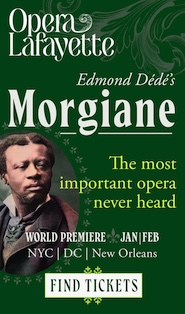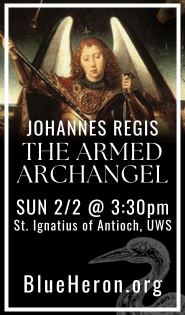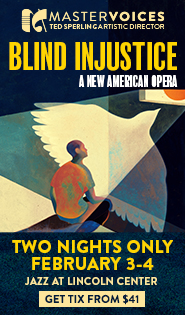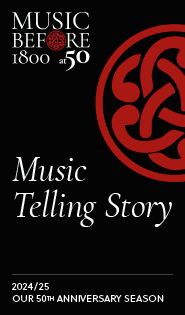Salonen’s quirky CONTACT! program achieves belated liftoff

Soprano Hila Plitmann performed Esa-Pekka Salonen’s “FLOOF” at the New York Philharmonic’s “Contact!” concert Monday night.
Esa-Pekka Salonen is not, repeat, not going to be the next New York Philharmonic music director.
Judging by the eccentric program he put together for the Philharmonic’s CONTACT! concert Monday night at National Sawdust, that’s just as well for him—he’s doing what he wants, and enjoying it.
Salonen didn’t conduct Monday night—that was Joshua Gersen—and the Philharmonic musicians only played one piece by him, FLOOF, but Salonen organized the program (or “curated” as the new cliché goes) and provided charming if rambling introductions.
His first comments were the most cogent and germane. The concert, he said, was music from “my teachers and mentors.” That meant pieces from Witold Lutoslawski, Franco Donatoni, and Niccolò Castiglioni.
Lutoslawski was “not formally a mentor,” Salonen admitted, but was an important musical and personal friend. Lutoslawski was one of the greatest and most important composers of the 20th century, an intelligent, elegant craftsman and innovative thinker who managed to reconcile two major influences: John Cage and the romantic era of the classical tradition. And it was by being the foremost interpreter of Lutoslawski’s orchestral music, after the composer himself, that Salonen rose to be a conductor of stature.
Four Philharmonic musicians—violinists Anna Rabinova and Fiona Simon, violist Irene Breslaw, and cellist Nathan Vickery—came together to play Lutoslawski’s String Quartet.
The quartet was written in a style Lutoslawski called “limited aleatory”–notated individual parts that are played independently. The composer didn’t make a score for early performances because he did not want to even imply that the musicians should be synchronized.
After fifty years, this idea is no longer radical, so the hesitant performance was a surprise. The experiment with chance is meant to produce music that never resolves but entices the listener on to the next thing—it should have an edge of mystery and intensity. The musicians had all the notes, but no edge, not even in the biting octave arpeggiations that are the musical cues to move to the next section. The playing was too synchronized, too vertically coordinated, as ensemble habits were too ingrained to fully leave behind.
Salonen did study with both Donatoni and Castiglioni, and their music made for a broad contrast. Salonen did a bit of apologizing before Gersen led an ensemble in Donatoni’s HOT, which is composed jazz. Salonen admitted that most jazz that comes out of classical composers is not good (to a jazz musician or fan, it’s often embarrassingly bad), before saying that HOT was good jazz.
But HOT isn’t good jazz. It has some interesting features, like a rolling (not walking) bass line punctuated by ghostly block chords in the piano, both played with nice articulation by bassist Max Zeugner and pianist Eric Huebner. There is also an appreciative glance back at Stravinsky’s Ebony Concerto, which is excellent composed jazz. But the music is both dated and clichéd, as if Donatoni’s only exposure to jazz was through Don Ellis records and David Amram’s score for Force of Evil—HOT sounds like a sketch music for a scene left on the cutting room floor. There are some rapid figurations for clarinet and saxophone, but everything feels tight, constrained, simulated.
Castiglioni’s Dulce refrigerium, subtitled “six sacred songs for piano,” was, on the other hand, a great pleasure. These are a series of finely formed miniatures, into which Castiglioni drops what Salonen termed “found objects” that create gorgeous flaws. There are hints of Scarlatti, Messiaen and Ravel in some of the gestures, and a Webernian brevity.
Huebner’s playing was beatific. There is a single bass note in all the music, which leads to an upward cadence on a single chord to end the penultimate song. The final Choral is two bars of music, a found ending and a found introduction to whatever may come next in life. Dulce refrigerium has unexpected depths.
FLOOF wrapped up the show. Subtitled “Songs of a Homeostatic Homer,” this is an early work from Salonen. It’s not his finest, but it is full of a fine wildness and irreverence. It falls under the unexpected influences—in the composer’s words—of Petrushka and Michael Jackson’s Bad. And, in what may be a first, the text comes from the great Polish science fiction writer Stanislaw Lem’s comic compendium of stories, The Cyberiad.
Sung with excellent theatricality and amazing high notes by soprano Hila Plitmann, FLOOF is a love poem about geometry: the sound of a robot that was built to write poetry finding its way from sounds to speech to verse. Banish any thought of rigid order, though: the soprano groans, gurgles, and gnashes her teeth, the instruments try to pull themselves into some kind of shape. FLOOF is not great art, but great fun.
The next CONTACT! concert is “The Messiaen Connection,” 7:30 p.m. March 7 at National Sawdust. nyphil.org





Posted Feb 02, 2016 at 7:06 pm by Dan Cohen
Great review. It’s nice to read a review that actually tries to describe as well as examine & critique the actual music heard on the program, not the career of the composer or how it compares to others or fits into the Lincoln Center season, etc. etc.
Posted Feb 09, 2016 at 3:31 pm by Curtis Darbasie
I respectfully disagree with the performance review of the Lutoslawski’s piece. The four NY Phil members delivered something remarkable. From where I sat at National Sawdust (in the upper level first seat right) I was able to see BOTH the talented performers and the sold-out section below, full of eager audience listeners of every age. Anna Rabinova, Fiona Simon (violins), Irene Breslaw (viola) and Nathan Vickery (cello) in my opinion and from the audience reaction, delivered Lutoslawski’s message extraordinarily, starting off this wonderful thought-provoking evening.
A key set up to the appreciation, not mentioned in the review, was Esa-Pekka’s introduction to the piece. As a young man, he witnessed an out of character but very human occurrence when he heard it with Lutoslawski. The very stoic composer in his 70’s upon hearing the piece. . .cried. Esa-Pekka described to us how touched he was with Wito’s reaction and wanted to know. . . but was unable to bring himself to ask, why, he cried. As the audience listened to the piece, the funebre passage came upon us. . . and we all shared a startling, awakening emotion. Each of the four performers played single note octaves sequentially, sustaining but with mournful diminuendo of sadness. We were left with musical imagery of DESOLATION, of dry trees without leaves, an abandoned and dilapidated home, an uninhabited and isolated planet of ice.
What was Wito’s desolation? Did he cry, thinking about the last sight of his father at age 5, just prior to his political execution by firing squad (along with his uncle)? Did Wito cry for himself, a 70 year old looking back at his mid-life when the piece was composed in 1965, a quarter century prior? The audience thought of him but also we reflected on our own desolation and perhaps the small glimpses of hope and call-to-action that followed in the composition. Aleatoric music as freedom within boundaries. Life within our limitations.
Bravi to the performers, Bravi to Esa-Pekka and Wito for sharing this with us!